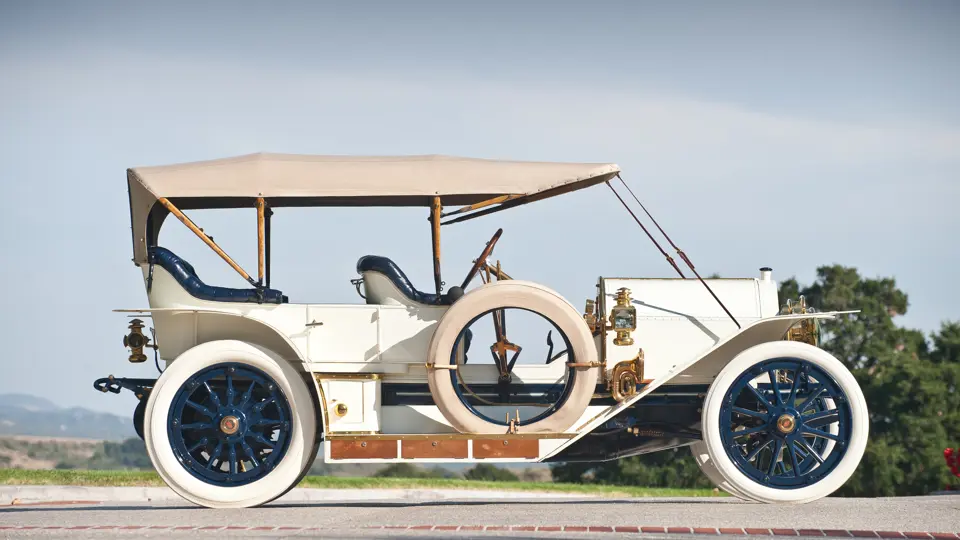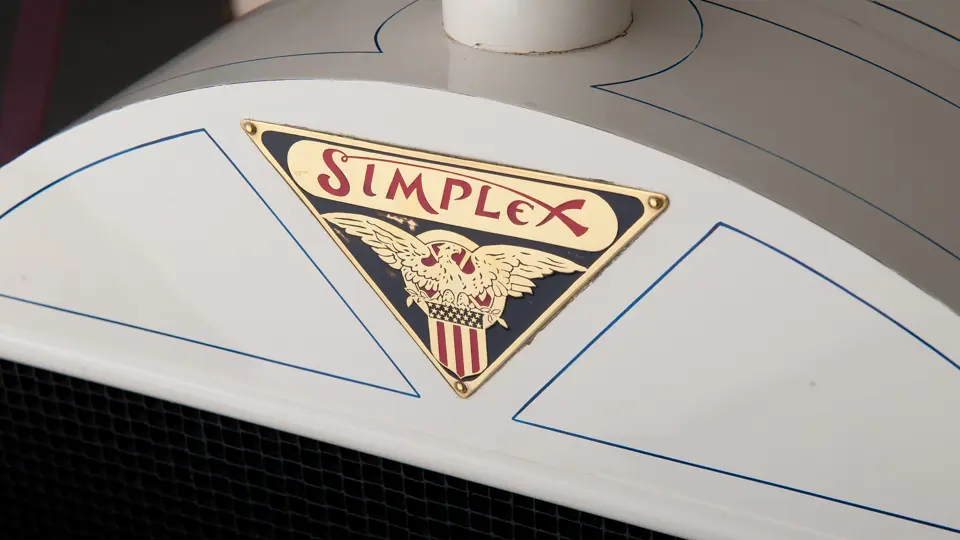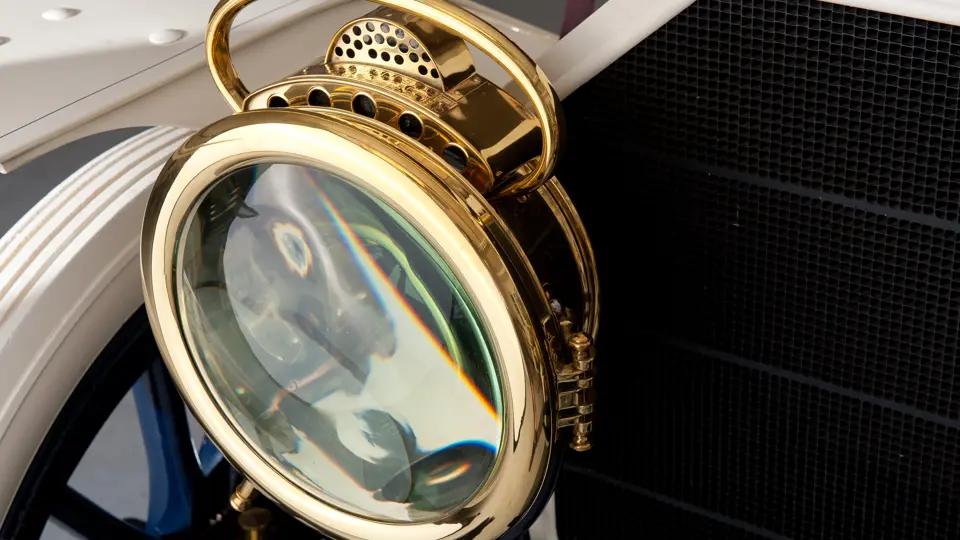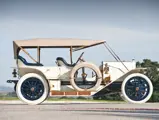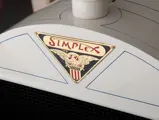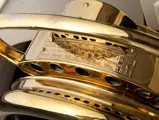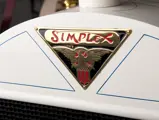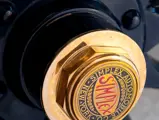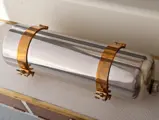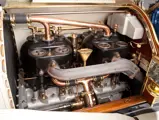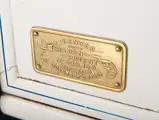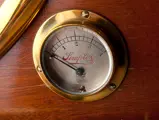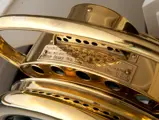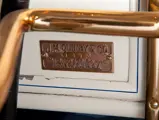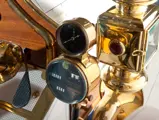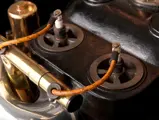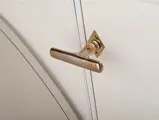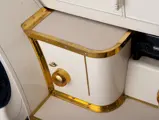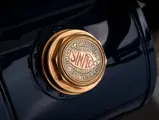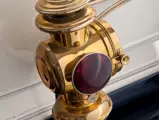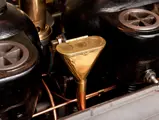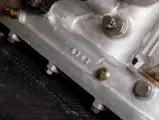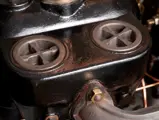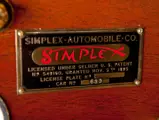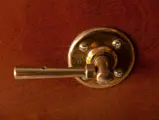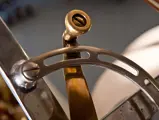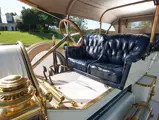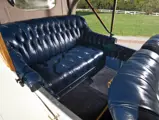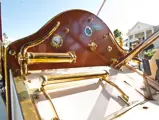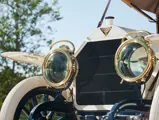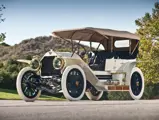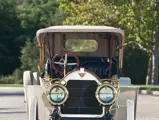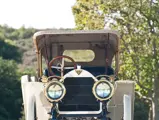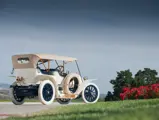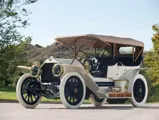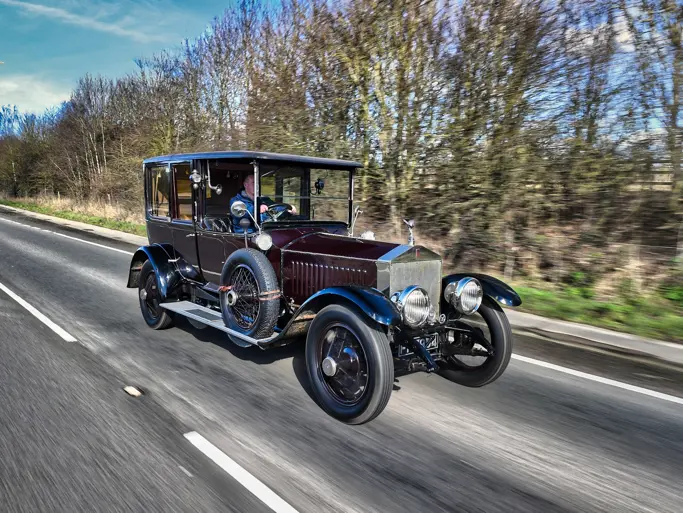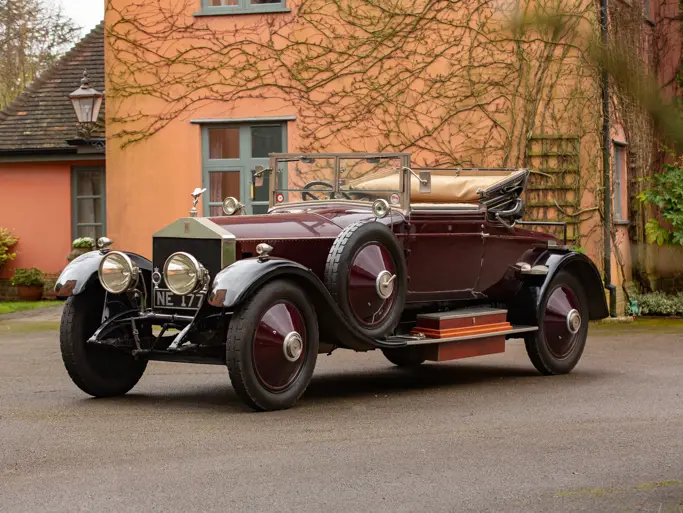50 hp, 597 cu. in. T-head four, four-speed manual transmission with double chain drive, solid front axle with semi-elliptic leaf springs front and rear, rear-wheel mechanical drum brakes. Wheelbase: 129"
- Offered from the Lyon Family Collection
- Known ownership since 1930
- Double-chain drive
- Ex-Harrah Collection
- One of about 250 50-hp examples built
The Simplex was first built in 1904 by the firm of Smith & Mabley, at the time one of the largest importers of foreign automobiles. In 1907 the company went bankrupt and was taken over by New York textile importer and foundry owner Herman Broesel. With his two sons, Broesel formed the Simplex Automobile Company. Simplex was and still is recognized for having produced some of the finest and most potent chassis available and maintains a distinction for being the last right-hand drive automobile produced in the United States. Although a Model 90 was available, it was the Model 50 that was most popular among the motoring elite.
A massive car with double chain drive and a chassis price of $4,500, the 50-horsepower Simplex won the 24-hour race at Brighton Beach with drivers George Robertson, Al Poole and Frank Lescault. In 1910 Robertson piloted the Simplex “Zip” at the Playa del Ray board track and bested drivers Ralph De Palma, Barney Oldfield, Caleb Bragg and David Bruce Brown with a record time of six minutes, 11 seconds. Approximately 250 Model 50s were produced over a five-year period, and only 150 examples of the 50 and the 90 were built in 1911. This latter figure is significant as running engineering improvements gave later production cars a slight edge. Like the finest cars of the era, the Simplex was sold as a bare chassis which could be dressed with coachwork from a number of firms. In the case of Simplex, factory-offered bodies were supplied by Demarest, Holbrook, Brewster, Healey or, as in the case of chassis 633, Quinby. Like other old-line coachbuilders, Quinby started out producing some of the most expensive bespoke carriages and later produced automobile bodies. The firm maintained stands at the early auto salons and displayed their handiwork on chassis like FIAT, Mercedes, Panhard, Benz and Isotta-Fraschini to name a few.
Chassis 633 first came into the hands of collector Art Austria in 1930. In a letter on file from January 1953 to then-current owner E. Ray Bottimore, Austria conveys that the Simplex was abandoned circa 1923 near Indio, California by a group crossing the country from New York. The Simplex had been updated with electric lights, most likely for the cross-country tour, which Austria replaced with correct Solar headlamps and Gray & Davis side- and tail-lamps. Bottimore acquired the car from Austria no later than 1953. In 1962 casino magnate and very prominent car collector Bill Harrah stepped up, paying a steep $8,250 in an era when a Duesenberg could be had for a few thousand dollars.
The restoration of the Simplex in Harrah’s own shops was begun in 1969. In a 1970s interview with The Classic Car, Bill Harrah gives a tour of his shops and explains the advanced methodology employed in a restoration. His team would research every aspect of a car, including correctness of materials, parts and finishes to be employed, as well as engage their ample contacts to source any and all information available relating to the vehicle in question. The documentation file for this Simplex is exhaustive; it includes information from previous owners, detailed internal memos and scans of correspondence between Harrah’s experts and outside researchers and specialists.
In his 1953 letter, Mr. Austria also states, “It was a seven-passenger touring car. The body was remodeled into its present model.” Given the able craftsmen available at the time, this modification was relatively easy and, like the addition of headlights, practical, since it would afford fewer passengers more room. Interestingly, both body styles were offered on the same chassis and at the same mammoth price of $5,600. Harrah’s restorers maintained the existing four-passenger configuration, and based on Mr. Austria’s remarks, it is believed that the modified Quinby body is original to the car.
General Lyon acquired the 1911 Simplex in 1986. His collection typically never included cars from this era, but this example was so spectacular that they had to keep it. It remains as-completed by the Harrah workshops in the early 1970s and is finished in White with Dark Blue leather interior and Tan cape top. The chassis is painted Dark Blue as are the wheels, which wear natural rubber tires. Chassis 633 is further equipped with a rare Warner Autometer and dual spare tires mounted on the driver’s side.
The Simplex and later Crane-Simplex were intended for an elite clientele with superlative quality, which dictated high price and low production. This 1911 Simplex Four-Passenger Tourabout embodies the finest in period automotive craftsmanship, restoration and provenance.
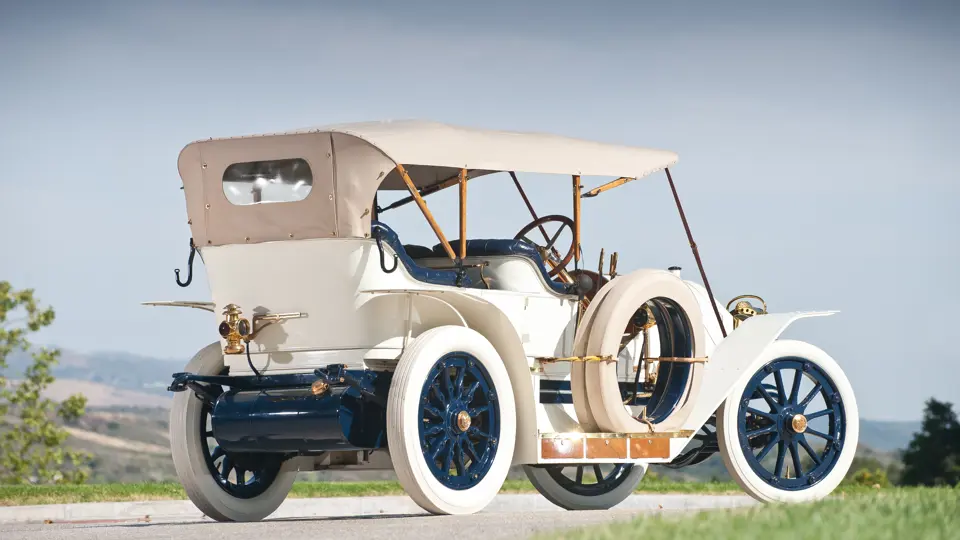

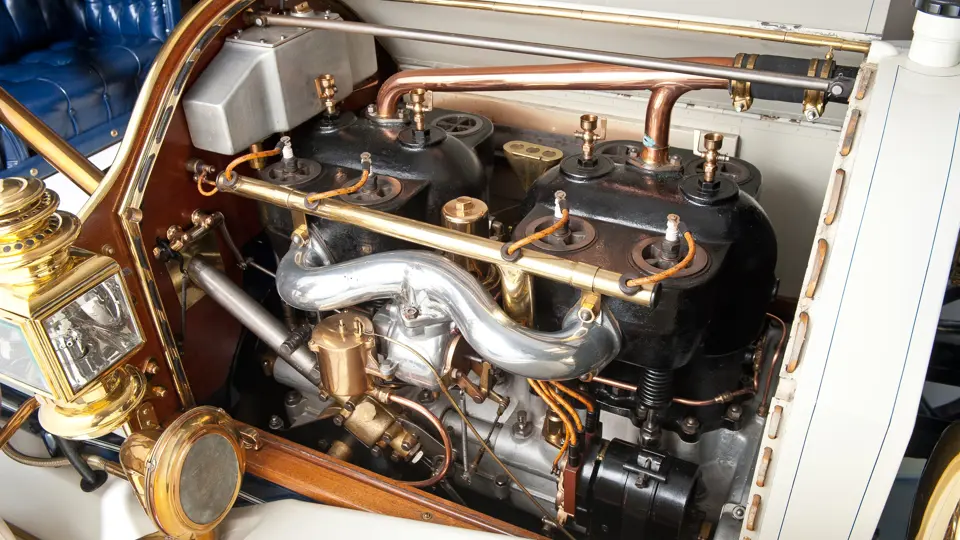

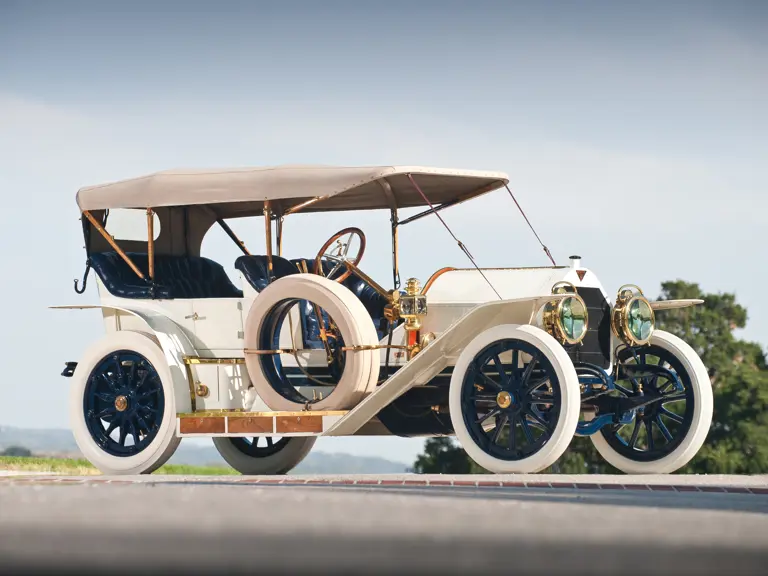
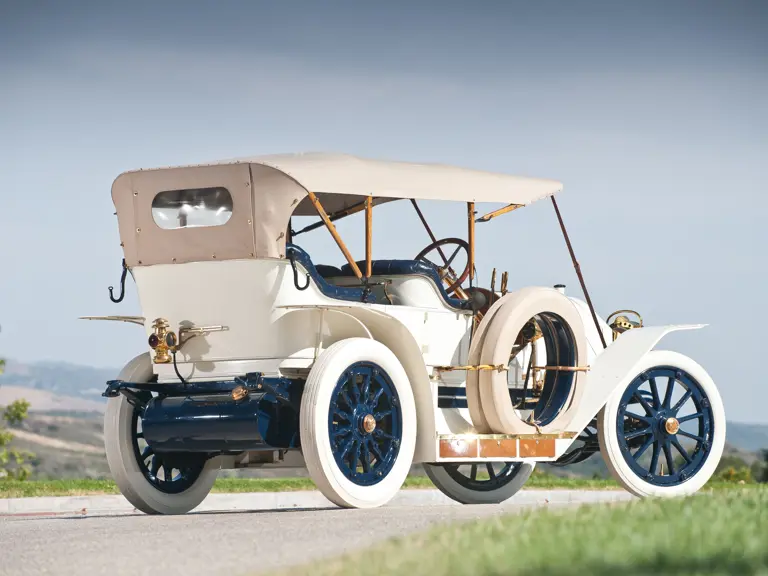
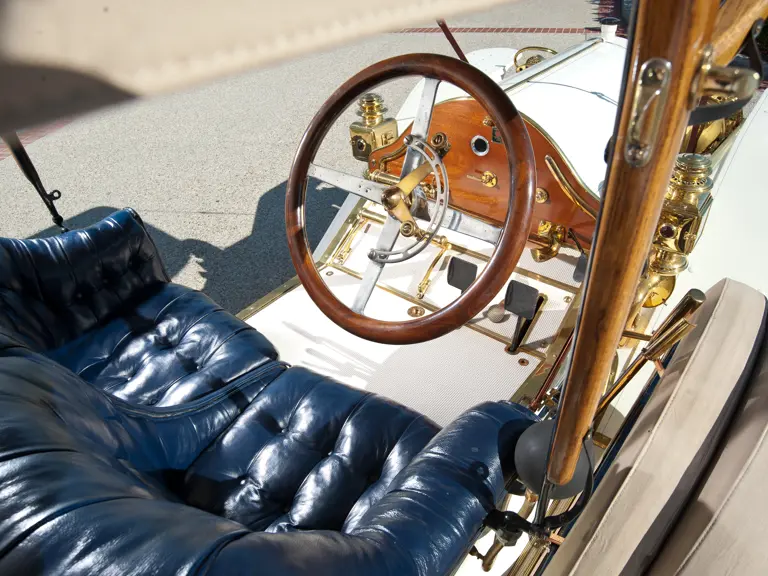
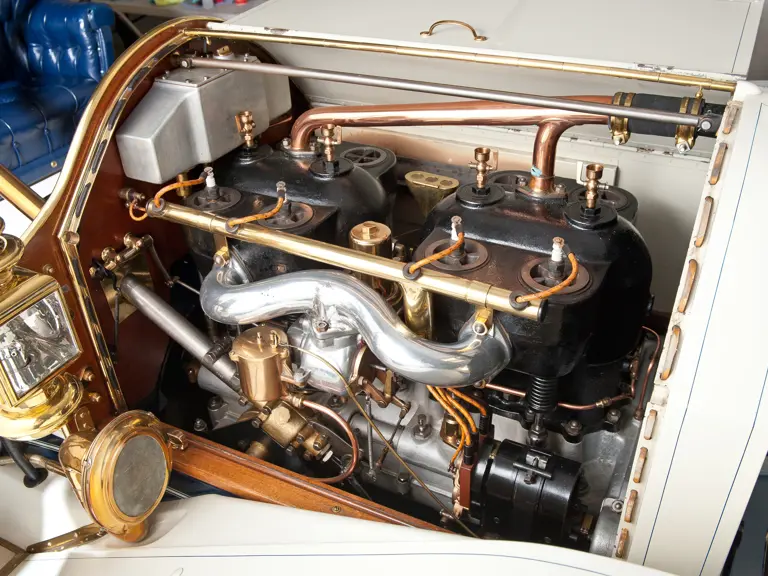
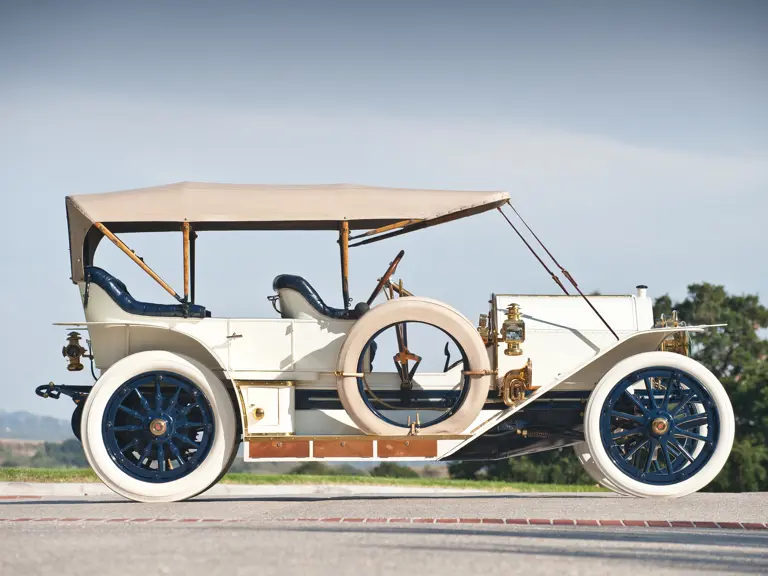

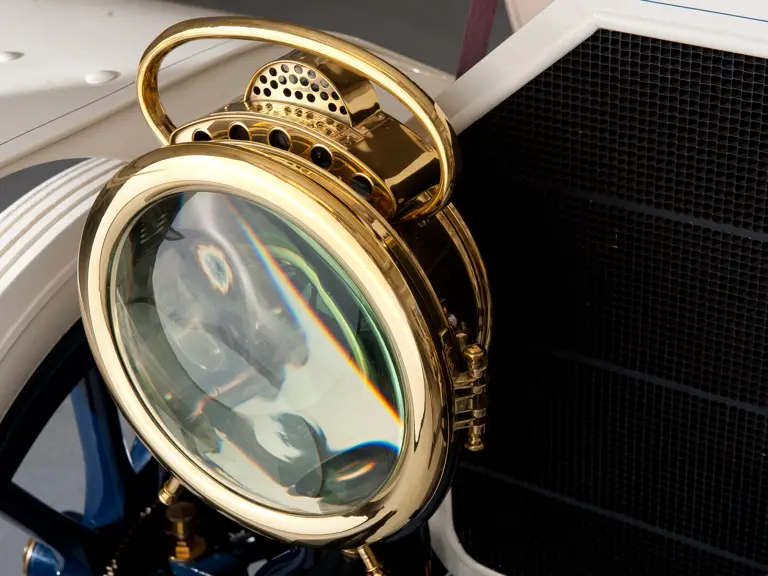
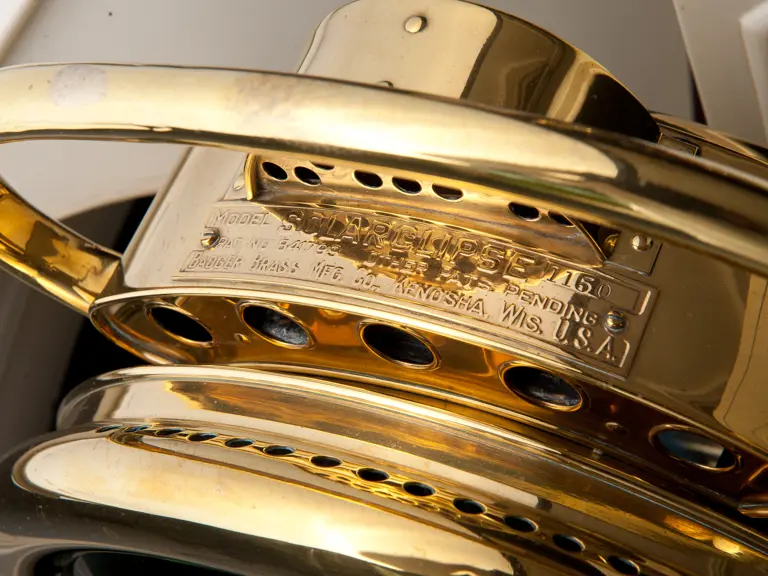

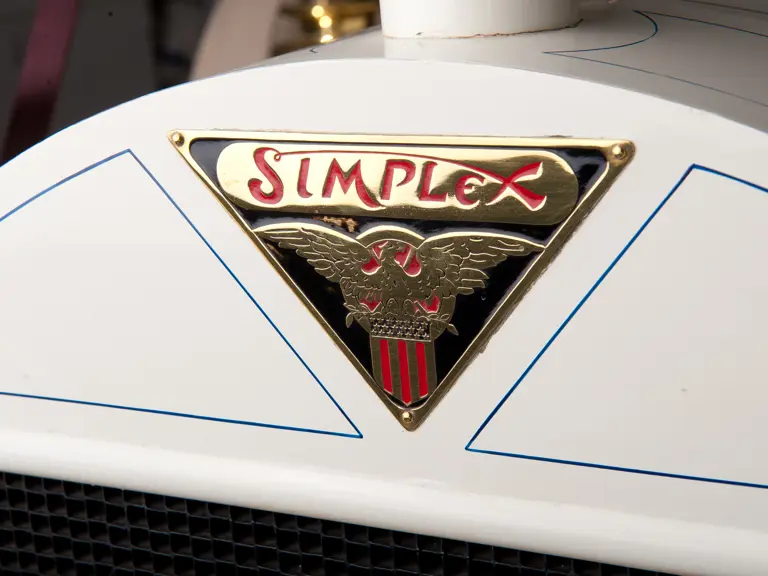
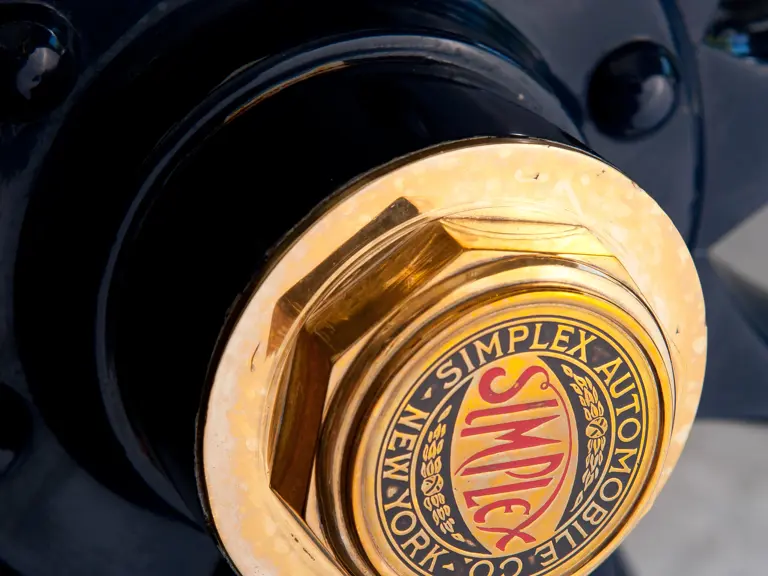
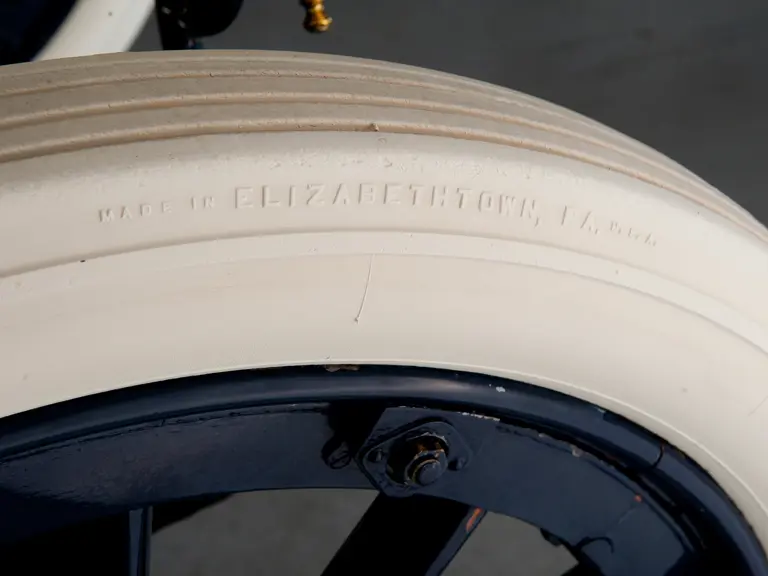

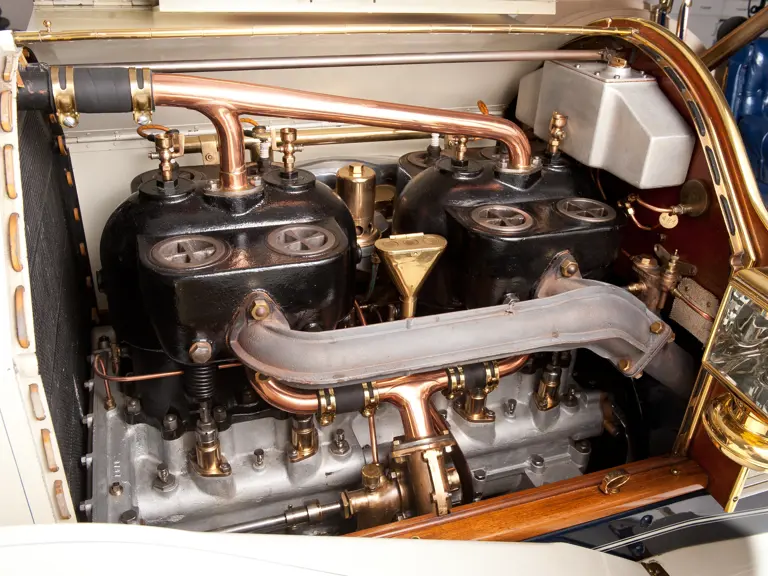

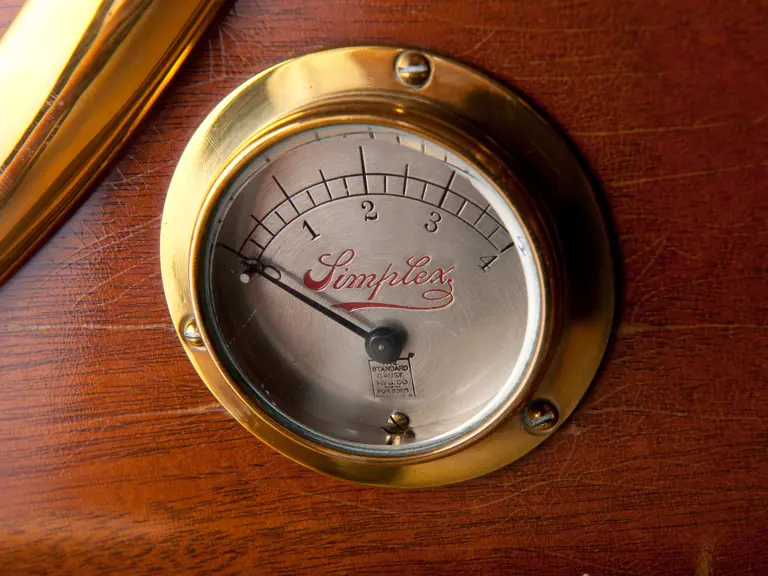
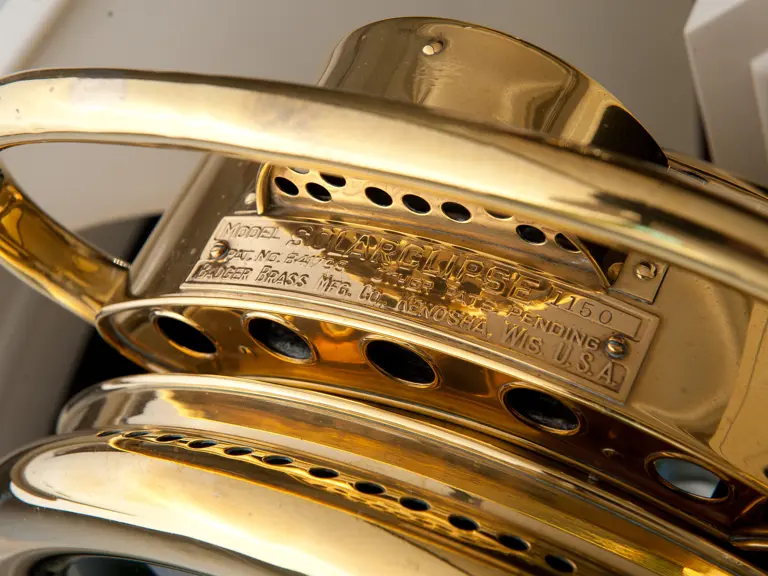
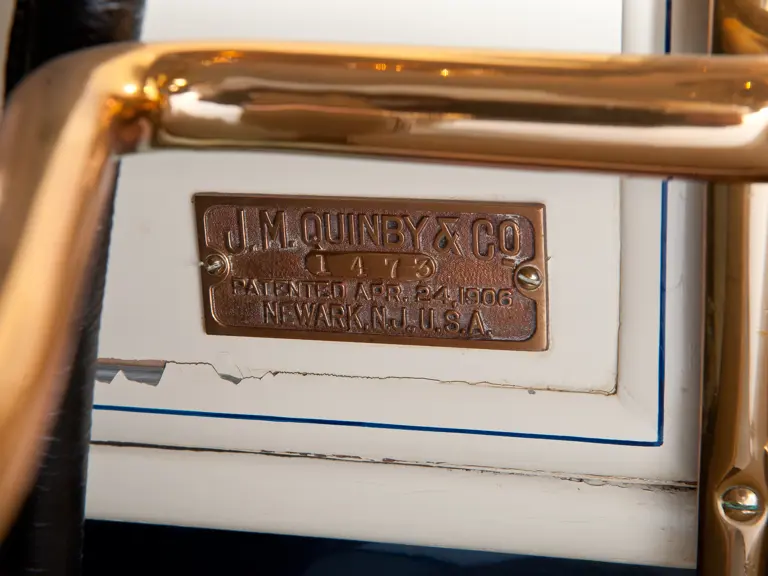
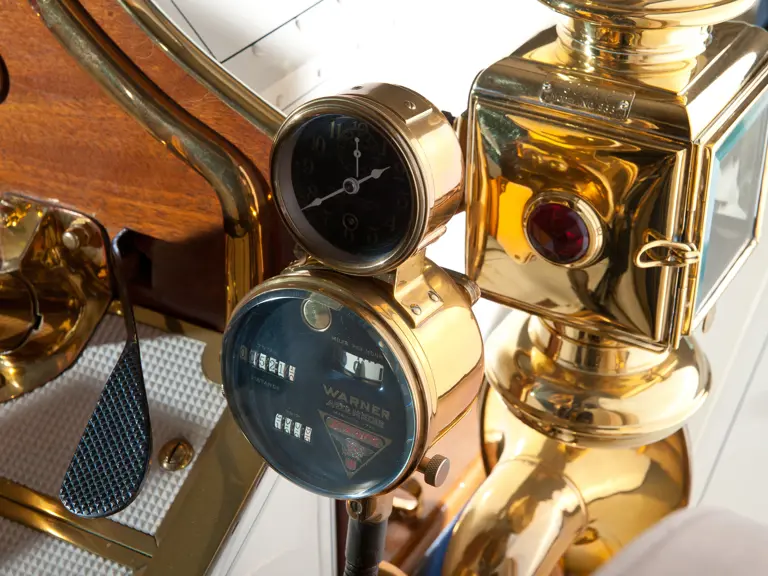


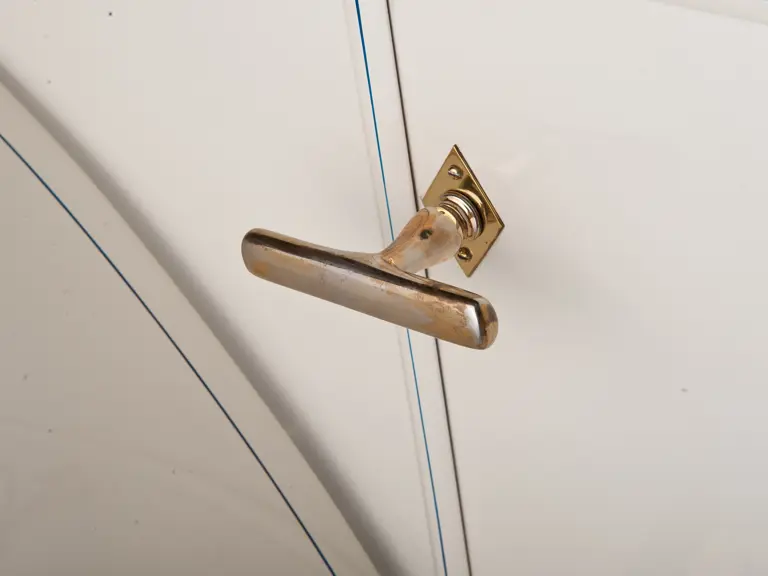
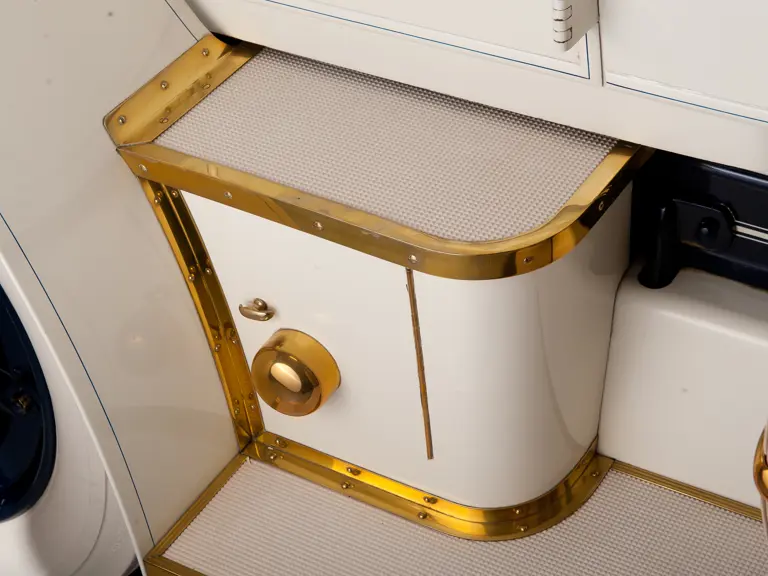
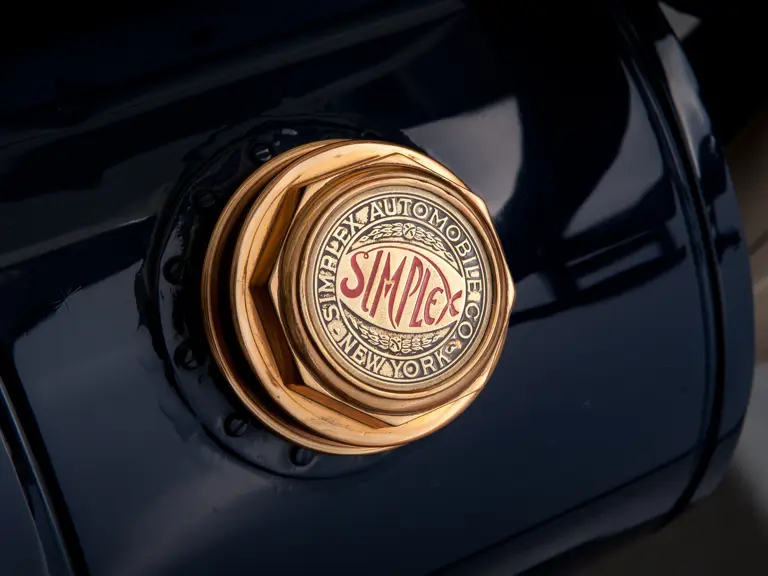

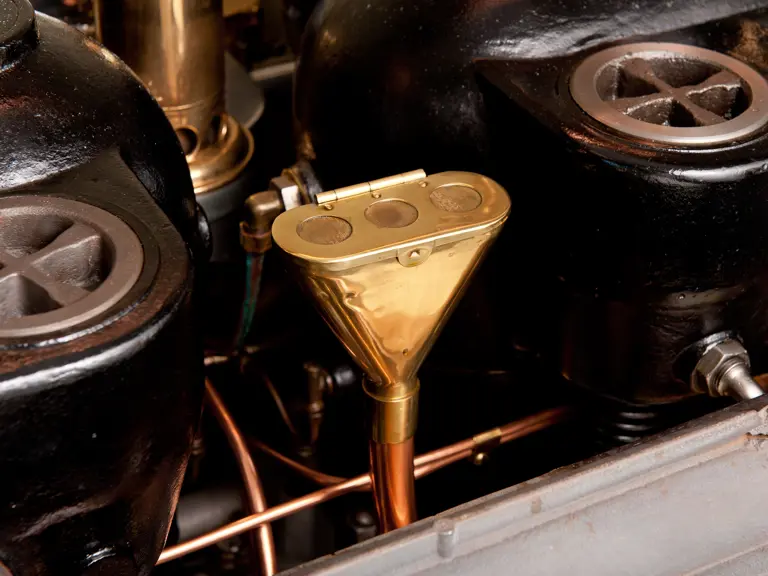
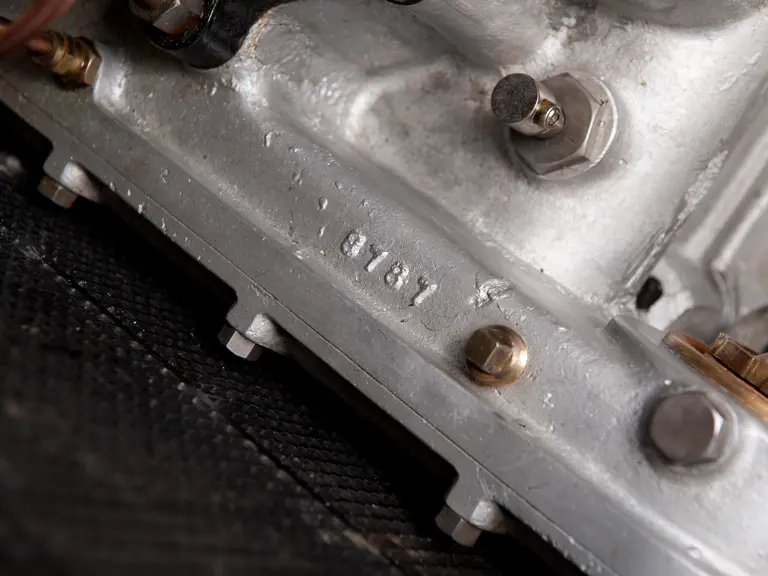
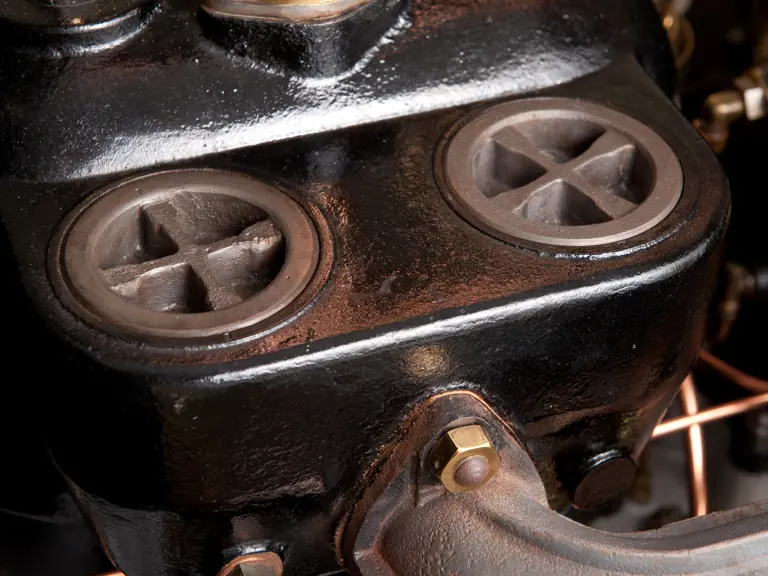
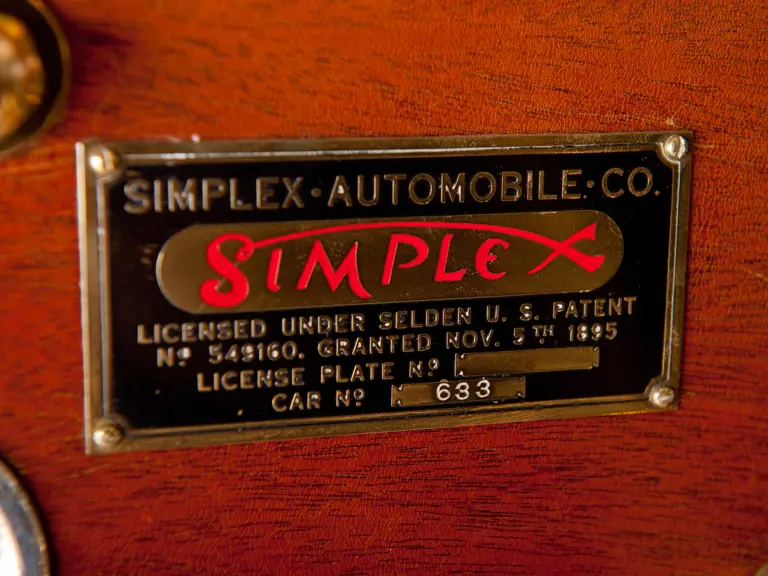

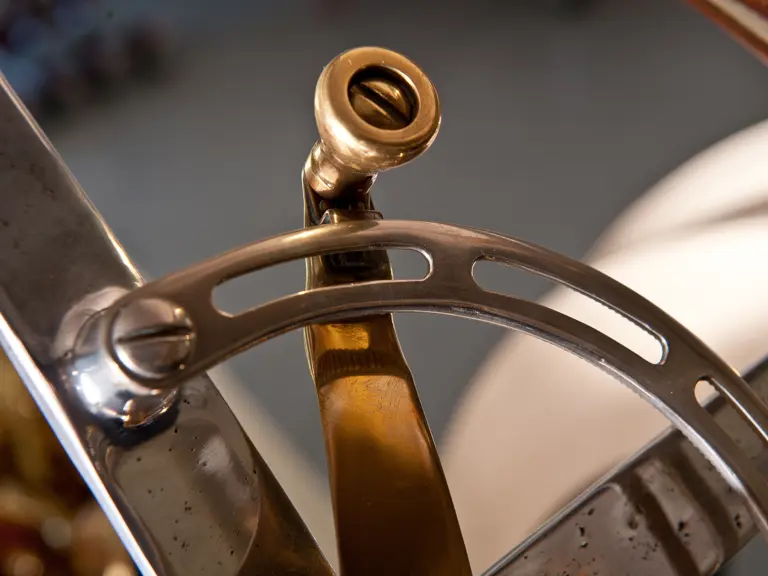

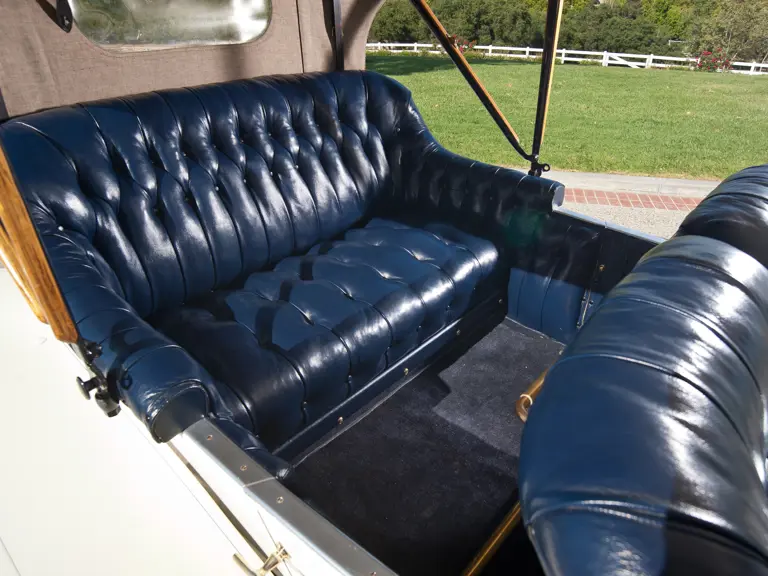
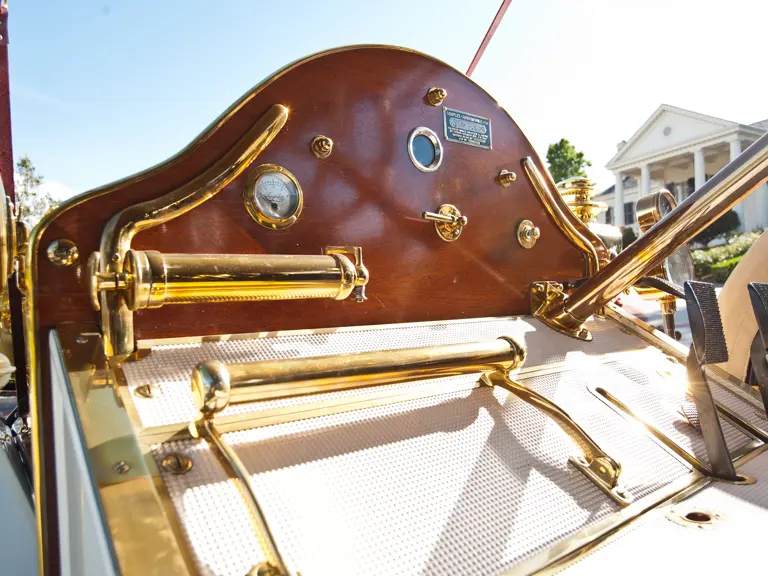


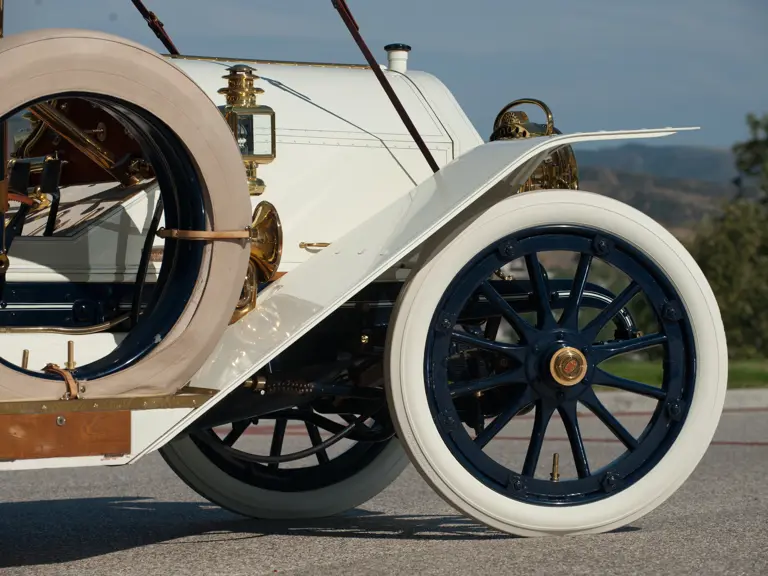
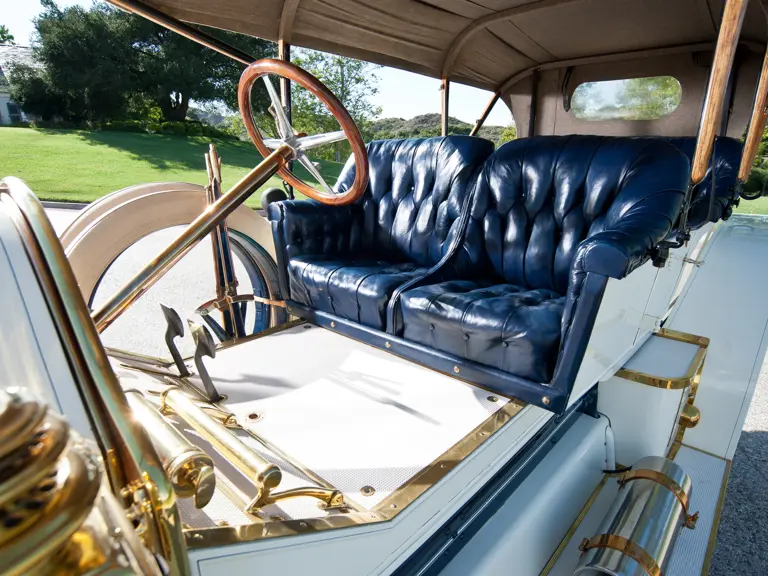
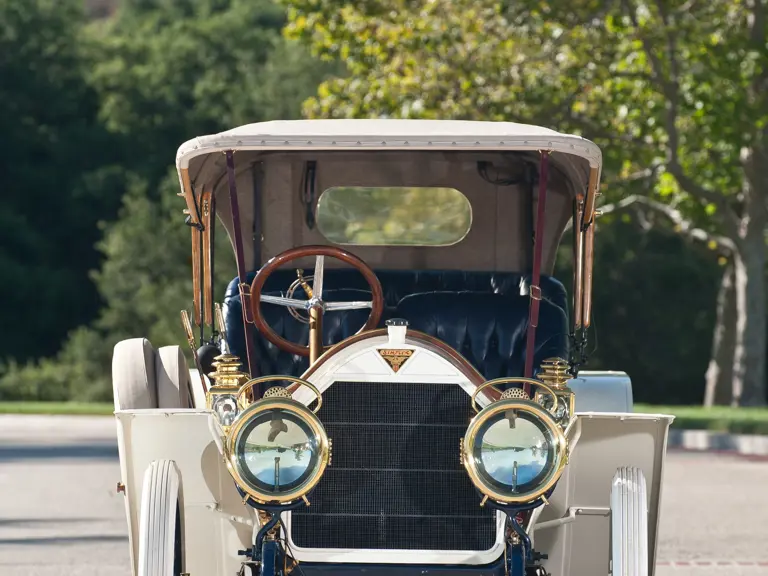
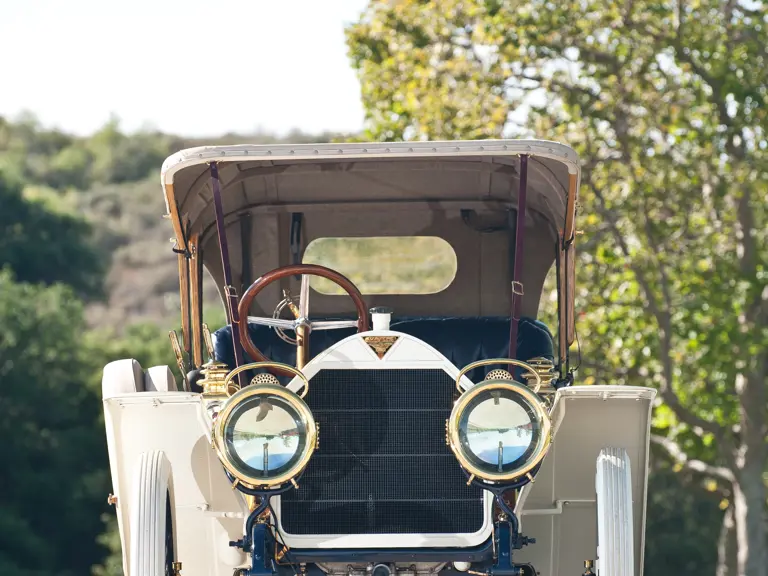
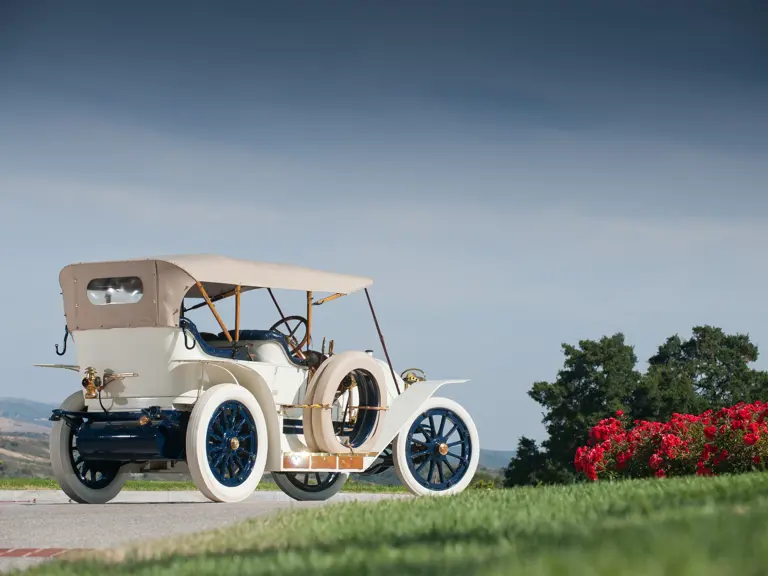
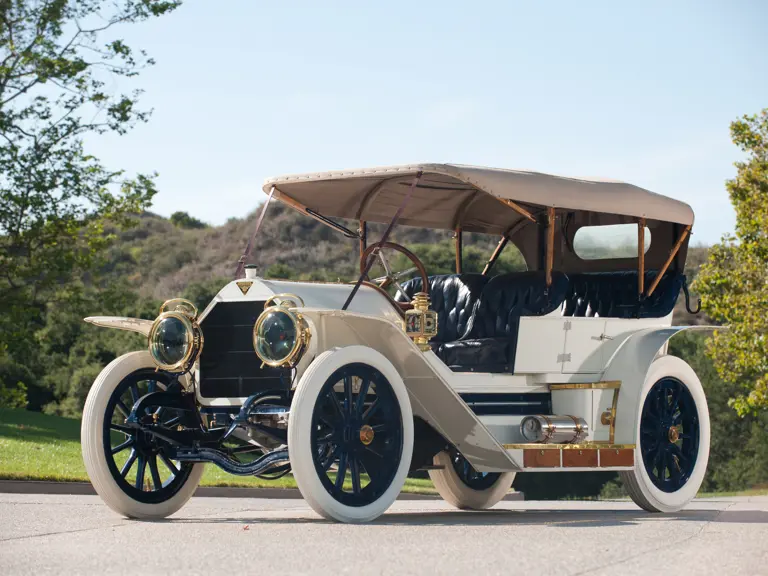
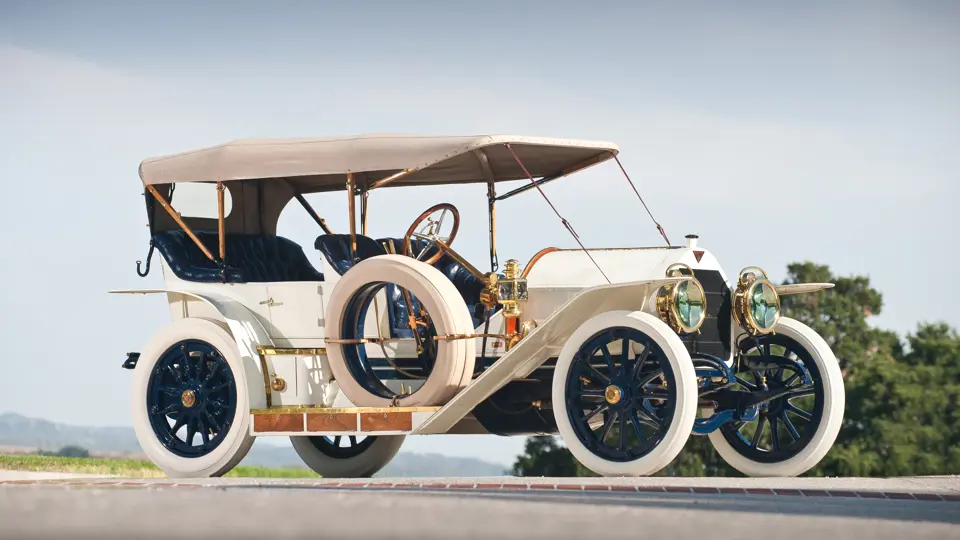
 | Monterey, California
| Monterey, California
